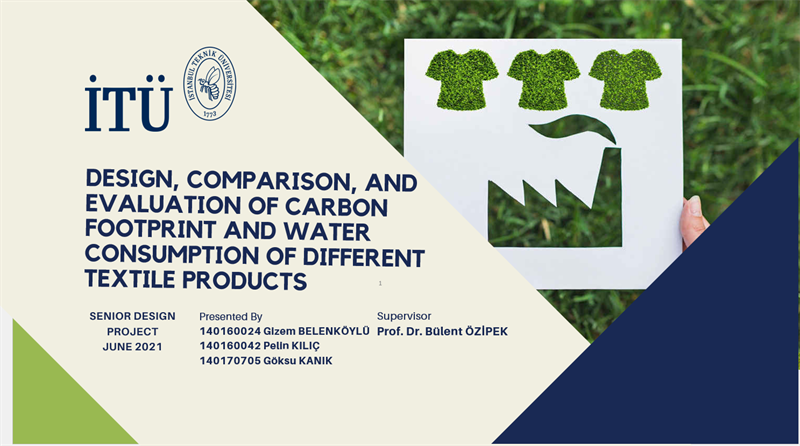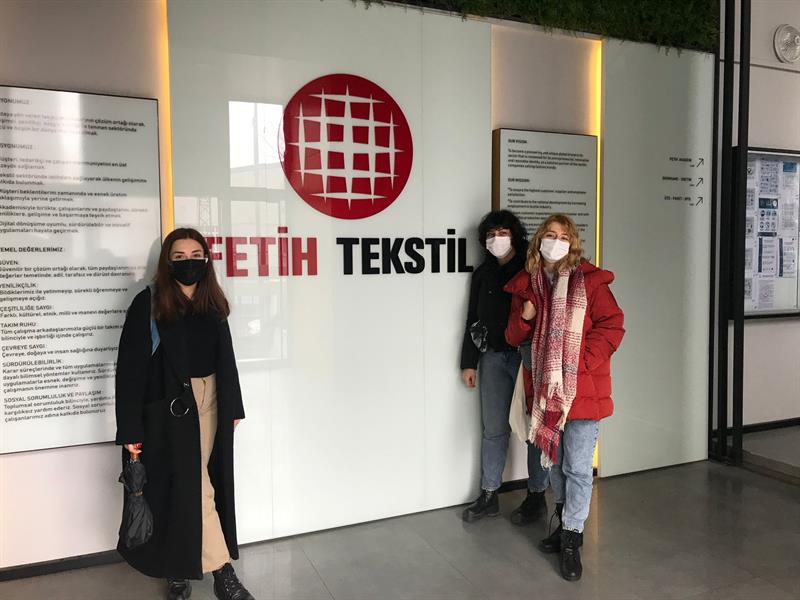Students: Gizem BELENKÖYLÜ, Pelin KILIÇ, Göksu KANIK
Advisor Information: Prof. Dr. Bülent ÖZİPEK
Supporting Organization / Project Information: Ekoteks Gözetim ve Araştırma Merkezi A.Ş, Sln Tekstil ve Moda Sanayi Tic. A.Ş., Fetih Tekstil, Taha Group, Özen Mensucat Boya Terbiye İşletmeleri A.Ş., Fersan Tekstil San. Tic. LTD. ŞTI / Comparison and Evaluation of Carbon Footprint And Water Consumption of Different Textile Products
Summary:
The apparel and textile industry, one of the most polluting industries, emits large amounts of carbon throughout the supply chain from fiber production to consumer use. The concept of carbon footprint is used to describe all greenhouse gas emissions associated with a product and expresses CO₂ emissions in grams per kilogram of fabric. In different aspects, such as fiber selection, manufacturing processes, consumer behavior, and reuse/recycling techniques, ensuring product sustainability can be accomplished. The textile industry is a greenhouse gas developer and one of the most important sources on Earth of greenhouse gases (GHGs).
The textile industry is one of the leading industries in water use. Whereas mechanical processing of textiles is does not required much water, a critical amount of water is utilized in chemical processes such as washing, bleaching, dyeing and finishing. The use of water differs according to the type of fiber, the processes used, the manufacturing method of the fabric (knitting, weaving, nonwoven) and even the machine used to produce the same type of fabric.
The purpose of this study is to investigate the analysis of all carbon footprints at intermediate stages and to introduce valuable information from the factory and, inspired by this study, to create a fully sustainable textile supply chain in the future. It is essential not to depend on a single company for the reliability of the study. For this reason, data were obtained from their companies, analyzed and it was determined which features of the product contributed to the carbon footprint by changing a few features of the products. It should also be emphasized that; this study is a first in Turkey, a product-oriented study has not been done in Turkey before.
According to the design in this study, the aim was to improve all the processes of a finished textile product. However, according to the data obtained, dye house and apparel evaluation and improvement were made. Considering the important factors in the dyehouse, machine power, duration, desired color, chemical content, and fiber type are important. Moreover, in the garment mill, machine power and duration are important factors that affect carbon footprint. It is obvious that thanks to the input-output table created in this study, it reaches a more conscious and reliable result in all processes.

